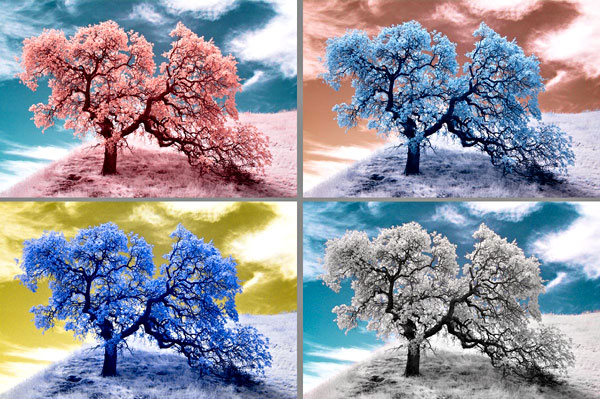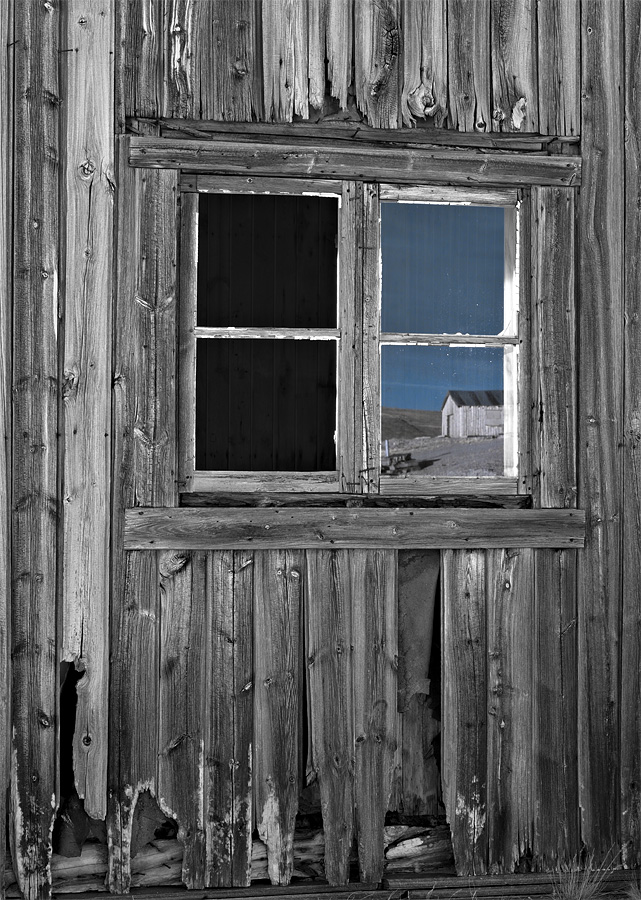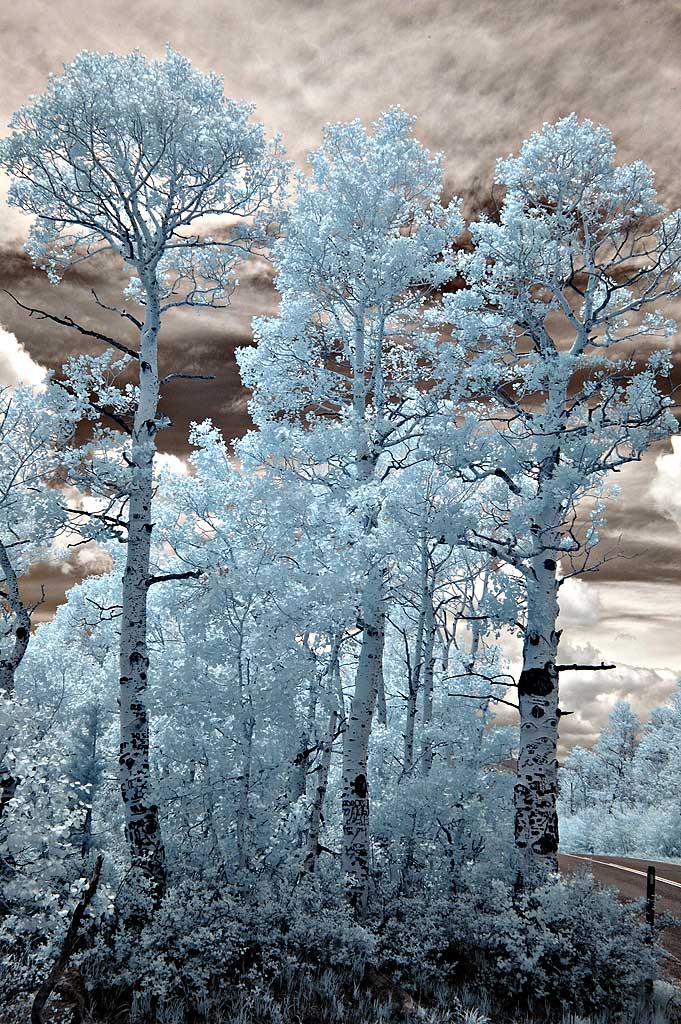
|

|

|

|

|

|
Seeing Beyond Red, as Published in ASMP NorCal
 |
|
 |
Skip over blue, green and yellow into red, then deep red and you enter the infrared spectral band, another “color” to which the human eye rapidly loses sensitivity. Like the other colors we can see, there are objects whose color is “infrared”, just as some objects are red, green, blue or a mix thereof. In infrared, foliage is brilliant, blue sky goes dark, and human skin becomes slightly transparent, yielding dramatic other-worldly effects that we cannot see with the naked eye.


As tonal relationships are shifted, a transformation of the mundane to the fantastic becomes possible, whether rendered as monochrome or “false color”. Such is the allure of infrared—a chance to bring personal artistic expression to everyday subjects, without the negating concerns of “manipulation”.
 Nikon
D70-IR, multiple renderings from the same original
Nikon
D70-IR, multiple renderings from the same original
Digital infrared is not like infrared color film; it is generally limited to a duotone effect, and is also highly dependent on the subject matter, camera response, and filtration. Sometimes it “works”, but most often a grayscale rendering is best.
 Nikon
D70-IR with 18-200 VR zoom
Nikon
D70-IR with 18-200 VR zoom
Cameras—to dabble, special infrared filters can be used with unmodified digital cameras, but to work efficiently you’ll want to convert and dedicate a camera for infrared use. The author has permanently modified a Canon EOS 5D, Nikon D70, Fuji F30 and Fuji F600fd. The Fuji F30 is a particularly inexpensive starter camera for those looking to experiment. Conversion consists of removing the internal infrared-blocking filter, and replacing it with one that blocks visible light, and passes infrared.
Lenses—Many lenses are excellent performers in infrared, but nearly all of them backfocus (focus behind the subject), leading to the inaccurate idea that infrared images are “soft”, where in fact they can be every bit as sharp as visible light images. With today’s high resolution digital cameras, stopping down is not sufficient to mitigate focus error, and thus care must be taken to achieve accurate focus. Point-and-shoot cameras largely avoid the issue, because they use the main sensor for focusing. “Hot spots” or central bright areas, especially when stopping down, can also make some lenses poor choices for infrared shooting.



Seeing in infrared—learning to “see” in infrared can be a challenge, but a “live view” point-and-shoot camera modified for infrared can be a great help; form and structure hidden by poor visible lighting can be revealed when infrared is used. While optimal lighting is also excellent in infrared, infrared can be pleasing in harsh sunlight, allowing outdoor shooting that one might normally avoid with visible light. Infrared also entices with its monochromatic simplicity, a refreshing alternative to color, especially with subjects whose form and shape are paramount.
Post-processing—though in-camera JPEG images can be used, it is more important to shoot infrared in RAW than with visible light, because extreme exposure and white balance adjustments might need to be made. Canon’s Digital Photo Professional and Nikon’s Capture both produce high quality results with RAW files shot in infrared. However, expect to apply post-processing (eg Photoshop) to achieve your artistic vision; infrared images nearly always benefit from adjustments to tone, though most images require minimal effort to achieve very appealing results.
For more information on digital infrared, see the free articles and blog at diglloyd.com. Also, the author’s Guide to Digital Infrared Photography will be available in June 2007.
 Death Valley’s Eureka
Dunes
Death Valley’s Eureka
Dunes 




















